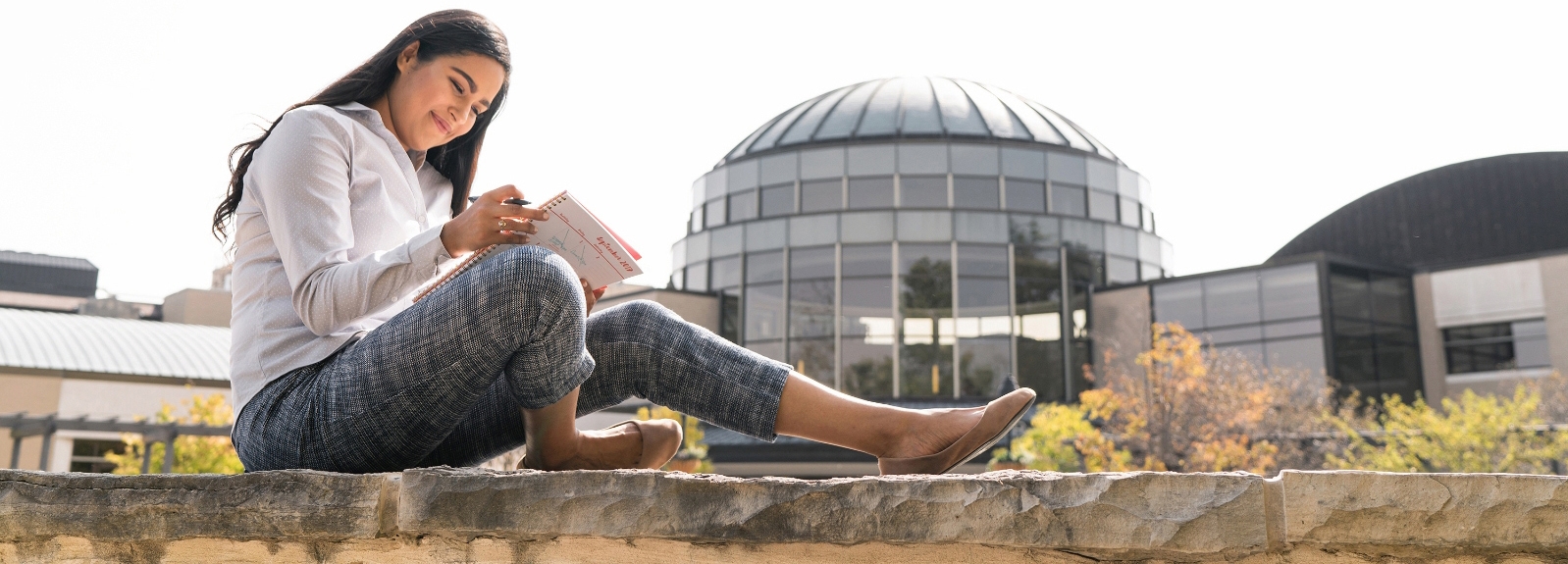Accelerate Faculty
Latest "Status of Girls in Wisconsin" Report Reveals Troubling Patterns
The Alverno Report: The Status of Girls in Wisconsin reveals a number of persistent, troubling patterns for Wisconsin girls, especially in the areas of sexual violence and human trafficking; stress, depression and suicide; bullying; TV, online and social media engagement; and substance use. The data also points to another disturbing fact - Wisconsin girls of color have it worse than white girls. Yet, the 2018-2019 report from the Alverno College Research Center for Women and Girls did note some improvement in areas including sexual activity, teen birth rates and smoking.
This is the fourth report on the status of girls in Wisconsin as part of Alverno's continued commitment to raise awareness regarding issues and challenges that impact girls in our state. The first report was released in 2007, followed by updates in 2010 and 2014. The report focuses on girls (in most cases ages 10-19) across the state of Wisconsin. Data are drawn from various sources compiled and analyzed by researchers affiliated with the Alverno College Research Center for Women and Girls.
Some of the key 2018 findings include:
Sexual Violence and Human Trafficking
- The vast majority of sex offenses committed in 2017 were against girls. (4,501 female victims vs. 790 male victims)
- It is estimated that 340 people under age 25 were victims of sex trafficking in Milwaukee. Of these, 97.0% were female and 65.0% were black; 55.0% were under age 18.
- More girls than boys report that they had been physically forced into having sex at least once. (8.9% vs. 5.1%)
Stress, Depression, Suicide and Self-Harm Behaviors
- More Wisconsin girls than boys report suicidal planning and behaviors, as well as self-harm behaviors.
- More girls than boys (38.1% vs 16.2%) reported symptoms of depression.
Bullying and Abuse
- Higher rates of childhood abuse are found in girls compared to boys in Wisconsin.
- The number of girls who have been bullied at school is higher than the number of boys. (28.3% vs. 20.1%)
TV, Online and Social Media Engagement
- There has been a dramatic increase in the number of hours girls report spent on computers or video games. They now surpass boys in this measure. In 2007, 15.5% of girls surveyed in Wisconsin reported spending three or more hours per day this way. By 2017 the number increased to 41.5% of girls.
- Significantly more girls in Wisconsin than boys reported experiencing cyberbullying with 24.9% of girls reporting they had been bullied in the past year compared to 11.9% of boys.
Weight and Exercise
- In Wisconsin the percentage of high school girls not being physically active for 60 minutes per day on five days of the week increased from 55.9% in 2013 to 58.3% in 2017 while in the same period boys had a decrease.
- We see a higher percentage of girls not participating in Physical Education (PE) classes one or more days a week, going from 50.5% of girls in 2013 to 54.5% in 2017.
Sex and Teen Pregnancy
- Rates of sexually transmitted infections (STIs) are higher in Milwaukee County than in other parts of the state, with girls of color much more likely to contract an STI.
- In Wisconsin 15.0% of girls reported having been forced into any sexual activity, as compared to 5.0% of boys.
Substance Abuse
- Girls in Wisconsin report higher rates of alcohol use than boys.
- More girls than boys report having used marijuana at least once.
The report also noted some encouraging news including:
- Students continue to report declining rates of teen pregnancy.
- Wisconsin has had a 63.0% decrease in teen births since 1991, and a 10.0% decrease from 2014 to 2015. Overall, Wisconsin has one of the lowest teen birth rates, ranked 42 out of 51 states and territories.
- Rates of youth smoking continue to decline in Wisconsin and nationally.
- In Wisconsin, the number of teens misusing opioids is lower than the national average.
- On the topic of education, a slightly higher percentage of girls (just over 90%) in Wisconsin public schools graduated with a regular high school diploma during the 2016-17 school year compared to boys (86.5%), but Wisconsin girls still lag behind boys in mathematics and science at the advanced level.
The Alverno Report: The Status of Girls in Wisconsin provides information, without extensive interpretation, to serve as a catalyst for young women and girls and the agencies that serve them to voice their perspectives on the issues and challenges they face and work to develop the solutions, programming and resources needed to address these issues.
The report is still the most comprehensive consolidation of information about the issues facing girls in our state. Several universities and colleges nationwide have followed Alverno College's lead in presenting data to improve the lives of girls.
The full 2018-2019 “Status of Girls in Wisconsin” report, as well as an executive summary, can be found at alverno.edu/statusofgirls. On March 23, Alverno College will host a Girls Summit that will offer an opportunity to address the challenges the report highlights. Registration is open at alverno.edu/research/girlssummit.
The Alverno College Research Center for Women and Girls is a center devoted to taking scholarly research that applies to the real world where it can inspire, transform and support initiatives that improve the lives of women and girls in Wisconsin and beyond. The center also partners with community agencies to foster discussion about important issues and identifies emerging research topics that can make a difference in women's lives.

